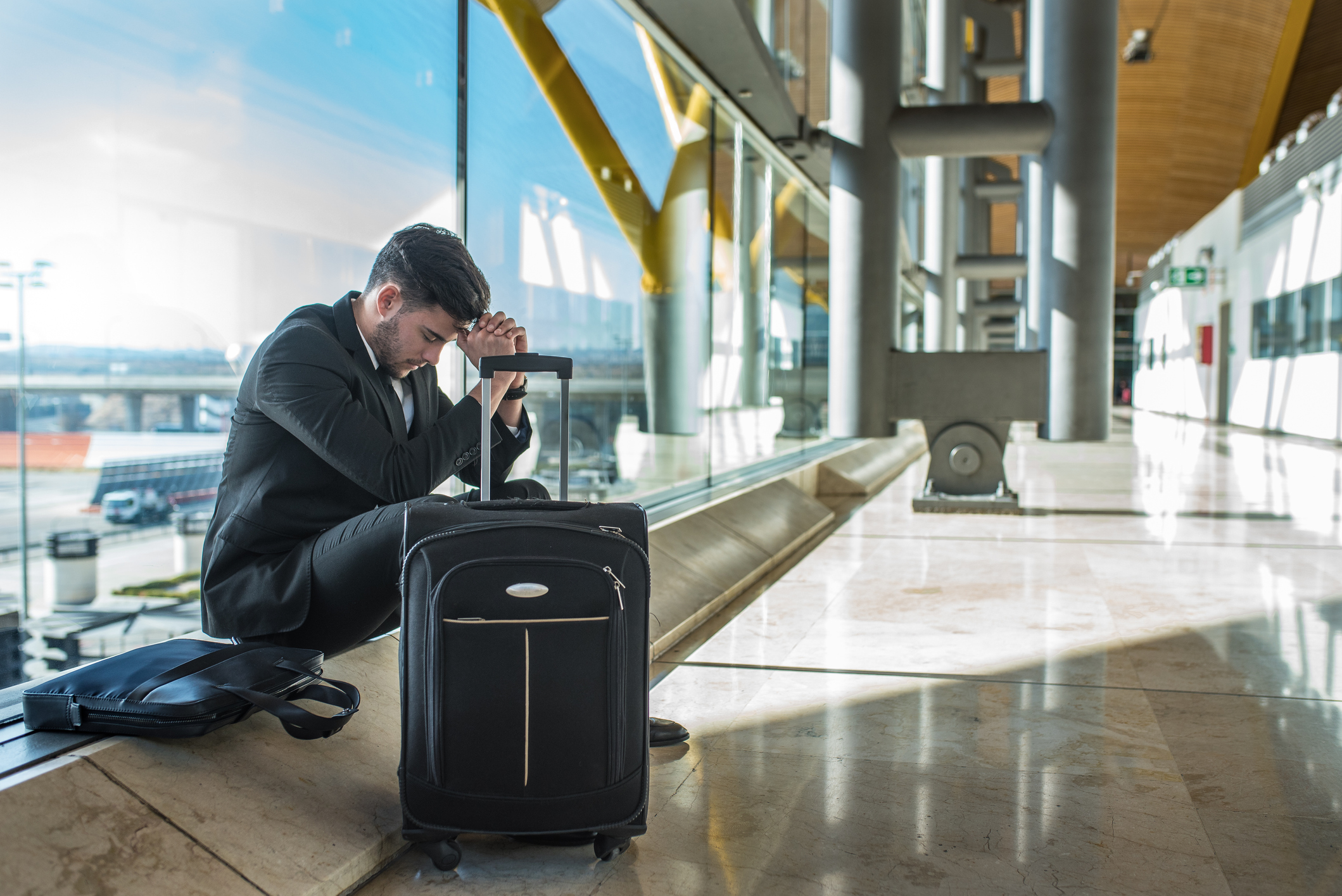Sprinting through airports to catch a connecting flight is a common travel nightmare. With tight schedules, will your next flight take off without you if you’re running late?
The short answer is sometimes, but not always.
Airlines may or may not hold a plane for connecting flyers depending on the circumstances.
In this in-depth guide, we’ll explore the key factors that determine if your connecting flight will wait or depart on time. You’ll learn airline policies on short connect times and flight delays.
We’ll discuss proactive steps you can take to minimize misconnections and make tight transfers less stressful.
You’ll also know how to handle things if you do miss your connection despite your best efforts.
Airline Policies on Delaying Flights
When it comes to catching connecting flights, one of the biggest concerns for travelers is whether their connecting flight will wait for them in case their first flight is delayed.
While each airline has its own policies regarding delayed flights and connecting flights, there are some general guidelines that can help you understand what to expect.
1. Minimum Connection Time:
Every airport has a minimum connection time, which is the shortest amount of time required to make a successful connection between flights.
This time varies depending on the airport and the airline. Generally, larger airports have longer minimum connection times compared to smaller ones.
It is important to note that airlines schedule their flights with these minimum connection times in mind, aiming to minimize delays.
2. Protecting Passengers:
Airlines are aware that delays can happen and they do their best to protect passengers who may miss their connecting flights due to a delay.
If your first flight is delayed and you have a tight connection, the airline will typically assist you by rebooking you on the next available flight to your final destination at no additional cost.
However, this is subject to availability.
3. Airline Responsibility:
While airlines strive to minimize disruptions and protect passengers, they are not legally obligated to hold connecting flights for delayed passengers.
Airlines have their own policies on how long they will wait for connecting passengers, which can vary depending on several factors such as the number of affected passengers and the impact on the overall flight schedule.
4. Compensation for Delays:
If you experience a significant delay due to an airline’s fault, such as mechanical issues or crew scheduling problems, you may be entitled to compensation under certain circumstances.
Each airline has its own policy regarding compensation, so it’s important to check with the airline directly or refer to their website for specific details.
5. Travel Insurance:
To protect yourself from potential financial losses due to missed connections, it is advisable to consider purchasing travel insurance.
It’s important to check the specific policies of the airline you are flying with regarding delayed flights and connecting flights.
You can find this information on the airline’s website or by contacting their customer service.
Remember, while delays can be frustrating, airlines are committed to ensuring a smooth travel experience for their passengers.
The Impact of Your Incoming Flight’s Status
One of the most common concerns for travelers is whether their connecting flight will wait for them if their incoming flight is delayed.
While there is no one-size-fits-all answer to this question, several factors come into play when determining the impact of your incoming flight’s status on your connecting flight.
1. Time Gap Between Flights
The time gap between your flights plays a significant role in whether your connecting flight will wait for you.
If you have a short layover, typically less than an hour, the chances of your connecting flight waiting for you decrease significantly.
Airlines often schedule flights with minimal layover times to maximize efficiency and minimize delays.
However, if you have a longer layover, say two or more hours, the likelihood of your connecting flight waiting for you increases.
2. Airline Policies
Each airline has its own policies regarding connecting flights and delayed passengers.
Some airlines have a policy of holding connecting flights for a certain period if a significant number of passengers are on the delayed incoming flight.
However, others may not wait and instead rebook passengers on the next available flight.
It is essential to familiarize yourself with the policies of the airline you are flying with to understand their approach to connecting flights and delays.
3. Airport Operations
Airport operations also play a role in determining whether your connecting flight will wait for you.
Some airports have more flexible operations and can accommodate delays more easily, while others may have a stricter schedule and may not hold flights for delayed passengers.
Understanding the operations of the airports you are traveling through can give you a better idea of the likelihood of your connecting flight waiting for you.
4. Communication with Airline Staff
When facing a delayed incoming flight and a tight connection, it is crucial to communicate with the airline staff as soon as possible. Inform them about your situation and ask for assistance.
They may be able to provide you with information about the status of your connecting flight and any alternatives available.
In some cases, they may even be able to hold the connecting flight or rebook you on a later flight if necessary.

Your Scheduled Connecting Time
When booking a flight with a layover, it’s important to consider your scheduled connecting time.
This is the amount of time you have between your arrival at one airport and your departure from another.
Airlines typically provide a minimum connecting time for passengers to ensure a smooth transition between flights. The duration of your layover can vary depending on a few factors:
1. Airport Size and Layout
The size and layout of the connecting airport can significantly impact the amount of time you need between flights.
Larger airports with multiple terminals may require more time to navigate between gates.
On the other hand, smaller airports with only one terminal may have shorter walking distances and can allow for quicker transfers.
2. Immigration and Customs Procedures
If you are traveling internationally, you will likely have to go through immigration and customs during your layover.
These procedures can take varying amounts of time, depending on the efficiency of the airport and the number of passengers going through the process.
It’s important to factor in this time when considering your connecting time.
3. Airline Policies
Each airline has its own policies regarding connecting flights. Some airlines may require a longer minimum connecting time to ensure that passengers have enough time to make their next flight.
It’s essential to check the airline’s policies when booking your ticket to ensure that you have a comfortable amount of time between flights.
4. Delays and Cancellations
While airlines do their best to stick to their schedules, delays and cancellations can occur due to various reasons, such as weather conditions or technical issues.
If your first flight is delayed or canceled, it’s important to contact the airline as soon as possible to discuss alternative options.
In some cases, airlines may rebook you on a later flight or provide compensation for the inconvenience.
Other Factors Airlines Consider
While it’s natural to wonder if your connecting flight will wait for you, there are several other factors that airlines take into consideration when making these decisions.
Understanding these factors can help you better navigate your travel plans and ensure a smoother journey.
1. Airline Policies
Each airline has its own policies regarding connecting flights and what they consider an acceptable connection time.
Some airlines may have stricter policies and require passengers to have a longer layover to minimize the risk of delays or missed connections.
It’s important to familiarize yourself with the specific policies of the airline you are flying with.
For more information, you can visit the airline’s official website.
2. Flight Load and Schedule
The load and schedule of the connecting flight also play a significant role in determining whether it will wait for delayed passengers.
If the connecting flight is fully booked or has a tight schedule, the airline may be less likely to wait for passengers who are running late.
However, if the flight has a lot of available seats or has a longer layover, there may be more flexibility.
3. Passenger Volume
Another factor that airlines consider is the number of passengers affected by a delay. If only a few passengers are impacted, the airline may be more inclined to hold the connecting flight.
However, if a large number of passengers are affected, the priority may be to get them to their destinations as quickly as possible, which may mean departing without waiting for delayed passengers.
4. Airline Alliances
Many airlines are part of alliances or have codeshare agreements with other carriers.
In these cases, they may be more likely to wait for delayed passengers, especially if the connecting flight is operated by a partner airline.
However, this can vary depending on the specific agreements in place and the airlines involved.
It’s important to note that these factors are not set in stone and can vary depending on the specific circumstances.
Airlines strive to balance the needs of their passengers with operational efficiency, so it’s always best to communicate with airline staff and keep them informed of any delays or issues you may encounter during your journey.
Tips to Make Tight Connections
Connecting flights can be a stressful experience, especially when you have a tight connection. Will your connecting flight wait for you?
While there is no definitive answer, there are several tips you can follow to increase your chances of making your next flight.
1. Plan Ahead
One of the most important tips to make tight connections is to plan ahead. Before booking your flight, check the layover time and consider the airport’s layout.
Some airports are known for long security lines or large distances between terminals, so it’s crucial to choose a reasonable layover time.
2. Use a Single Airline
Whenever possible, try to book your entire journey with a single airline.
This reduces the risk of miscommunication between airlines and increases the likelihood that your connecting flight will wait for you.
Airlines often have agreements with each other, but it’s still best to stick with one to avoid any potential complications.
3. Check for Delayed Flights
Prior to your flight, check for any delays or schedule changes. This can be done through the airline’s website or mobile app.
By staying informed, you’ll be able to adjust your plans accordingly and potentially avoid missing your connection.
4. Pack Light
If you have a tight connection, it’s advisable to travel with carry-on luggage only. This eliminates the need to wait at the luggage carousel and allows you to move quickly through the airport.
Plus, you won’t have to worry about your checked baggage making it to the next flight.
5. Be Familiar with the Airport
Take some time to familiarize yourself with the layout of the airport before your trip.
Look up the terminal map and note the locations of your arrival and departure gates. This will help you navigate the airport more efficiently and save precious time.
6. Communicate with Airline Staff
If you’re running late for your connecting flight, don’t hesitate to communicate with the airline staff.
They can provide guidance, assist with rebooking options, and even notify the connecting flight’s crew about your situation. Remember, they’re there to help you.
7. Consider Travel Insurance
In some cases, it may be worth investing in travel insurance, especially if you frequently take connecting flights.
Travel insurance can provide coverage for missed connections due to unforeseen circumstances, such as flight delays or cancellations.
While there’s no guarantee that your connecting flight will wait for you, following these tips can increase your chances of making it to your destination smoothly.
Remember to stay calm and focused, and don’t hesitate to seek assistance from airline staff when needed.
Conclusion
While airlines want to accommodate customers, on-time departures are also a priority. The odds of your flight waiting depend on many variables.
Understanding policies and proactively managing connect times reduces stress when every minute counts.
With preparation and quick action if delayed, you can feel confident you’ve done all possible to make your connecting flight or handle a rare misconnection smoothly.






